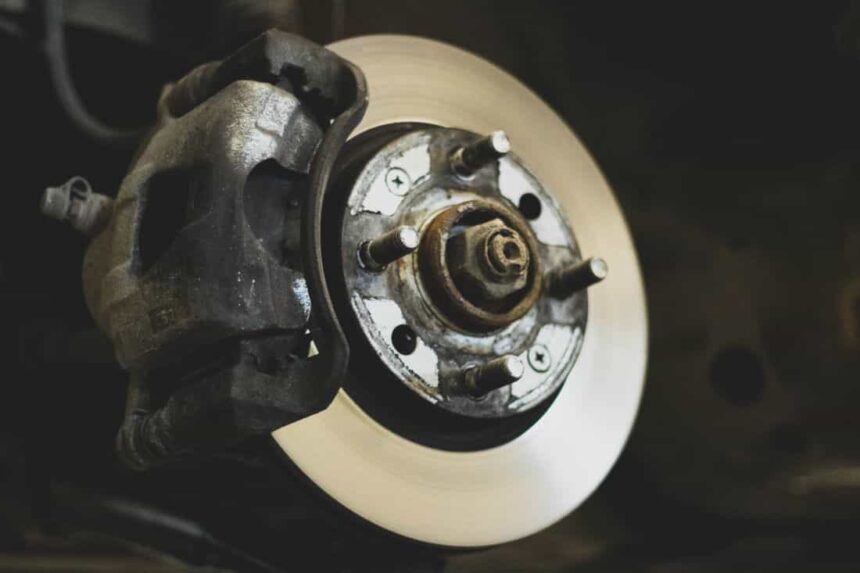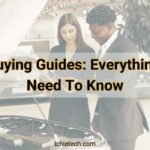Hub bearings play a crucial role in the smooth and efficient operation of a vehicle’s wheels. As components that facilitate wheel rotation, they bear the weight of the vehicle and enable smooth movement. However, over time, hub bearings can wear out or become damaged, leading to potential safety hazards and decreased performance. In this article, we will explore the signs of bad hub bearings and provide solutions for detection and replacement, ensuring optimal functionality and safety on the road.
Understanding Hub Bearings
Before delving into the signs and solutions, it is important to have a clear understanding of hub bearings. Hub bearings are compact and highly engineered components that allow for the smooth rotation of the wheel assembly. They consist of several parts, including inner and outer races, rolling elements (balls or rollers), and a cage that holds the rolling elements in place. Hub bearings are typically sealed units, providing protection against contaminants and maintaining lubrication for optimal performance.
Signs of Bad Hub Bearings
Detecting bad hub bearings is essential for addressing the issue promptly. By recognizing the signs, you can prevent further damage and ensure your safety on the road. The following are common signs of bad hub bearings:
- Abnormal noise from the wheels: Bad hub bearings often produce distinctive noises. Listen for grinding or growling sounds, which may indicate worn-out bearings. Whirring or humming noises can suggest a lack of lubrication or damage.
- Wheel vibration and wobbling: If you experience vibrations or wobbling sensations in the steering wheel or throughout the vehicle, it may indicate a problem with the hub bearings. Such vibrations are often felt at higher speeds.
- Uneven tire wear: Worn or damaged hub bearings can cause uneven tire wear patterns. Check for uneven tread wear or excessive wear on specific areas of the tire. Uneven tire wear can lead to decreased traction and compromised handling.
- Steering instability and wandering: Faulty hub bearings can affect the stability and control of the vehicle’s steering. If you notice difficulty in maintaining a straight line or the steering feels loose and unresponsive, it may be a sign of bad hub bearings.
Diagnosing Bad Hub Bearings
To confirm the presence of bad hub bearings, it is important to perform a proper diagnosis. While professional evaluation is recommended, there are a few methods you can use to detect potential issues:
- Visual inspection: Inspect the hub bearings for visible signs of damage, such as rust, pitting, or leakage. Any abnormality should be addressed promptly.
- Road test: Take the vehicle for a test drive, paying attention to any unusual noises or vibrations. Note any changes in steering responsiveness or stability.
- Stethoscope or chassis ears: Using a stethoscope or chassis ears, listen for abnormal sounds while the vehicle is in motion. This can help pinpoint the source of the noise and confirm if it originates from the hub bearings.
- Seek professional diagnosis: If you are uncertain or unable to diagnose the issue yourself, it is best to consult a professional mechanic. They have the expertise and specialized equipment to accurately diagnose bad hub bearings.
How to Replace Hub Bearings
Once a bad hub bearing has been identified, it is crucial to replace them promptly to ensure safety and optimal performance. While the following steps provide a general overview of the replacement process, it is recommended to consult a repair manual specific to your vehicle for detailed instructions:
- Gather the necessary tools and equipment: Before beginning the replacement process, ensure you have the appropriate tools, including a torque wrench, socket set, and a hub puller or press if required.
- Elevate the vehicle and secure it safely: Use jack stands or a hydraulic lift to raise the vehicle off the ground. Ensure it is securely supported before proceeding.
- Remove the wheel and brake assembly: Begin by removing the wheel and brake calliper to gain access to the hub assembly.
- Extract the old hub bearing: Depending on the design, this may involve removing retaining bolts or using a hub puller or press to dislodge the bearing from the hub assembly.
- Install the new hub bearing: Clean the hub assembly thoroughly and apply a thin layer of high-temperature grease to the mounting surface. Install the new hub bearing and ensure it is properly aligned.
- Proper torquing and reassembly: Follow the manufacturer’s specifications to torque the hub bearing retaining bolts or nuts to the recommended settings. Reassemble the brake components and reinstall the wheel.
Professional Hub Bearing Replacement
While it is possible to replace hub bearings yourself, it is important to recognize the value of professional expertise in this process. Professional technicians have the knowledge, experience, and access to specialized tools and equipment to ensure proper installation and alignment. Additionally, they may offer warranties or guarantees on their work, providing peace of mind and reassurance.
Preventive Maintenance
To extend the lifespan of your hub bearings and minimize the chances of encountering bad bearings, it is crucial to practice preventive maintenance. Here are some key maintenance practices to consider:
- Regular inspection and lubrication: Periodically inspect your hub bearings for any signs of wear or damage. Properly lubricate them as recommended by the manufacturer.
- Timely replacement of worn bearings: If you notice any signs of wear or damage during inspections, promptly replace the worn bearings to prevent further issues.
- Proper wheel and tire maintenance: Ensure your wheels and tires are properly aligned and balanced. This reduces stress on the hub bearings and promotes even wear.
- Driving habits and avoiding excessive loads: Avoid aggressive driving and excessive loads, as these can place additional strain on the hub bearings. Drive responsibly and avoid overloading your vehicle beyond its recommended capacity.
Hub Bearing Types and Selection
Hub bearings are critical components in a vehicle’s wheel assembly, enabling smooth and efficient rotation. Proper selection of hub bearings is crucial for ensuring optimal performance, durability, and safety on the road.
Types of Hub Bearings
There are two main types of hub bearings: ball bearings and roller bearings. Each type has its own unique characteristics and advantages.
Ball Bearings
Ball bearings are the most commonly used type of hub bearings. They consist of a series of balls housed between two rings, known as the inner and outer races. The balls rotate within a cage, maintaining separation and allowing smooth movement. Some key features and benefits of ball bearings include:
- Structure and working principle: Ball bearings utilize the rolling action of small balls to reduce friction and facilitate rotation. This design minimizes contact surface area, resulting in lower friction and improved efficiency.
- Advantages and applications: Ball bearings are known for their high-speed capabilities and low rolling resistance. They are widely used in vehicles where reducing friction and achieving higher speeds are crucial, such as passenger cars, motorcycles, and light trucks.
Roller Bearings
Roller bearings, as the name suggests, employ cylindrical or tapered rollers instead of balls. These rollers distribute the load over a larger surface area, allowing for higher load capacities. Here are some key aspects of roller bearings:
- Structure and working principle: Roller bearings use cylindrical or tapered rollers that roll between the inner and outer races. The rollers distribute the load more evenly, reducing stress and improving load-carrying capabilities.
- Advantages and applications: Roller bearings are preferred in heavy-duty applications where the vehicle carries significant loads or operates under harsh conditions. They provide greater durability, load-carrying capacity, and resistance to shock and vibration. Roller bearings are commonly found in commercial vehicles, trucks, and industrial machinery.
Factors to Consider in Hub Bearing Selection
When selecting hub bearings for your vehicle, it is important to consider several factors to ensure the best fit and performance. Here are the key considerations:
- Vehicle Make and Model: Different vehicles have varying requirements in terms of load capacity, speed, and operating conditions. Consult your vehicle’s specifications or seek expert advice to identify the specific bearing requirements for your make and model.
- Load Capacity and Performance Requirements: Evaluate the load capacity and performance demands of your vehicle. Consider factors such as towing capacity, payload, and intended use to determine the bearing type and specifications that can handle the anticipated load and operating conditions.
- Quality and Durability: Opt for high-quality hub bearings from reputable manufacturers. Quality bearings are made with precision and superior materials, ensuring durability, reliability, and extended service life.
- OEM vs. Aftermarket Options: Original Equipment Manufacturer (OEM) bearings are designed specifically for your vehicle and are often the preferred choice. However, aftermarket options can provide comparable performance and may offer cost savings. Research reputable aftermarket brands and ensure compatibility with your vehicle.
Selecting the Right Hub Bearing
To make an informed decision when selecting hub bearings, consider the following steps:
- Consultation with Experts: Seek advice from automotive professionals or specialists who have expertise in hub bearings. They can guide you based on their experience and knowledge of different bearing options.
- Reference to Vehicle Specifications: Review your vehicle’s documentation, including the owner’s manual or technical specifications, to identify the recommended bearing type and specifications. This information ensures compatibility and adherence to manufacturer guidelines.
- Considering Application-Specific Requirements: If your vehicle has specific requirements, such as off-road capabilities or high-performance needs, consider specialized bearings designed for such applications. These bearings are engineered to withstand demanding conditions and offer enhanced performance.
- Balancing Cost and Quality: While cost is a consideration, prioritize quality and reliability when selecting hub bearings. Investing in high-quality bearings may result in longer service life, reduced maintenance costs, and enhanced safety.
Cost Considerations
The cost of hub bearing replacement can vary depending on several factors. These factors may include the type and quality of the bearings, the vehicle make and model, and labour costs. It is recommended to compare prices and estimates from different reputable sources to find the balance between cost and quality. Remember that investing in high-quality hub bearings can save you money in the long run by reducing the risk of premature failure and subsequent repairs.
The Difference Between Wheel Bearings and Wheel Hubs
Wheel bearings and wheel hubs are essential components of a vehicle’s wheel assembly, contributing to its smooth operation and stability. While they work together to facilitate wheel movement, it’s important to understand the difference between the two, we will delve into the structure and function of wheel bearings and wheel hubs, highlighting their key distinctions.
Wheel Bearings
Wheel bearings are compact, precision-engineered components that allow smooth rotation of the wheels. They are typically located within the wheel hub assembly and play a crucial role in supporting the wheel and facilitating its movement. Let’s explore the structure and function of wheel bearings in more detail.
Structure and Function of Wheel Bearings
- Components of a wheel bearing assembly: A wheel bearing assembly consists of several components, including an inner race, an outer race, ball bearings, and a cage. The inner race is attached to the vehicle’s axle or spindle, while the outer race is connected to the wheel hub. The ball bearings roll between these races, reducing friction and enabling smooth wheel rotation.
- Role of wheel bearings in facilitating wheel rotation: Wheel bearings bear the weight of the vehicle and endure the forces generated during driving. They allow the wheel to rotate freely with minimal resistance, ensuring smooth handling and efficient transfer of power from the engine to the road.
Wheel Hubs
Wheel hubs, on the other hand, are larger components that provide support for the wheel and serve as attachment points for various parts of the wheel assembly. They play a crucial role in maintaining wheel stability and ensuring proper wheel alignment. Let’s explore the structure and function of wheel hubs in more detail.
Structure and Function of Wheel Hubs
- Components of a wheel hub assembly: A wheel hub assembly consists of the hub itself, wheel bearings, studs or bolts, and mounting flanges. The hub is a cylindrical or disc-shaped component that houses the wheel bearings and provides a sturdy structure for wheel attachment.
- Role of wheel hubs in supporting the wheel and providing attachment points: Wheel hubs serve as the interface between the suspension system and the wheel assembly. They provide a secure mounting point for the wheel and allow it to rotate smoothly. Additionally, the studs or bolts on the hub allow for proper attachment of the wheel to the hub, ensuring stability and safety during operation.
Key Differences Between Wheel Bearings and Wheel Hubs
While wheel bearings and wheel hubs work in conjunction, there are some key differences between them that are important to understand. Let’s explore these differences in more detail.
Location and Function
Wheel bearings enable wheel rotation: Wheel bearings are located between the inner and outer races within the wheel hub assembly. Their primary function is to reduce friction and enable smooth wheel rotation.
Conclusion
Detecting and addressing a bad hub bearing is essential for maintaining the safety and performance of your vehicle. By understanding the signs of bad hub bearings and following proper diagnosis techniques, you can identify and address issues promptly. Whether you choose to replace the hub bearing yourself or seek professional assistance, prioritize proper installation and alignment for optimal functionality. Additionally, practising preventive maintenance and selecting the right hub bearing type can contribute to prolonged bearing life and enhanced driving experience. By taking proactive measures and addressing hub-bearing issues, you ensure a smoother and safer ride on the road.










